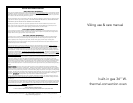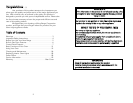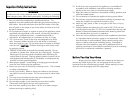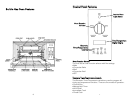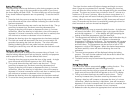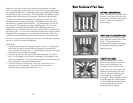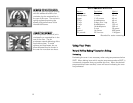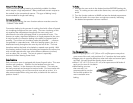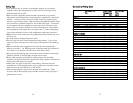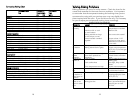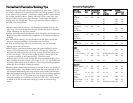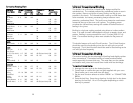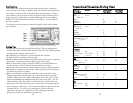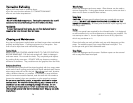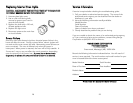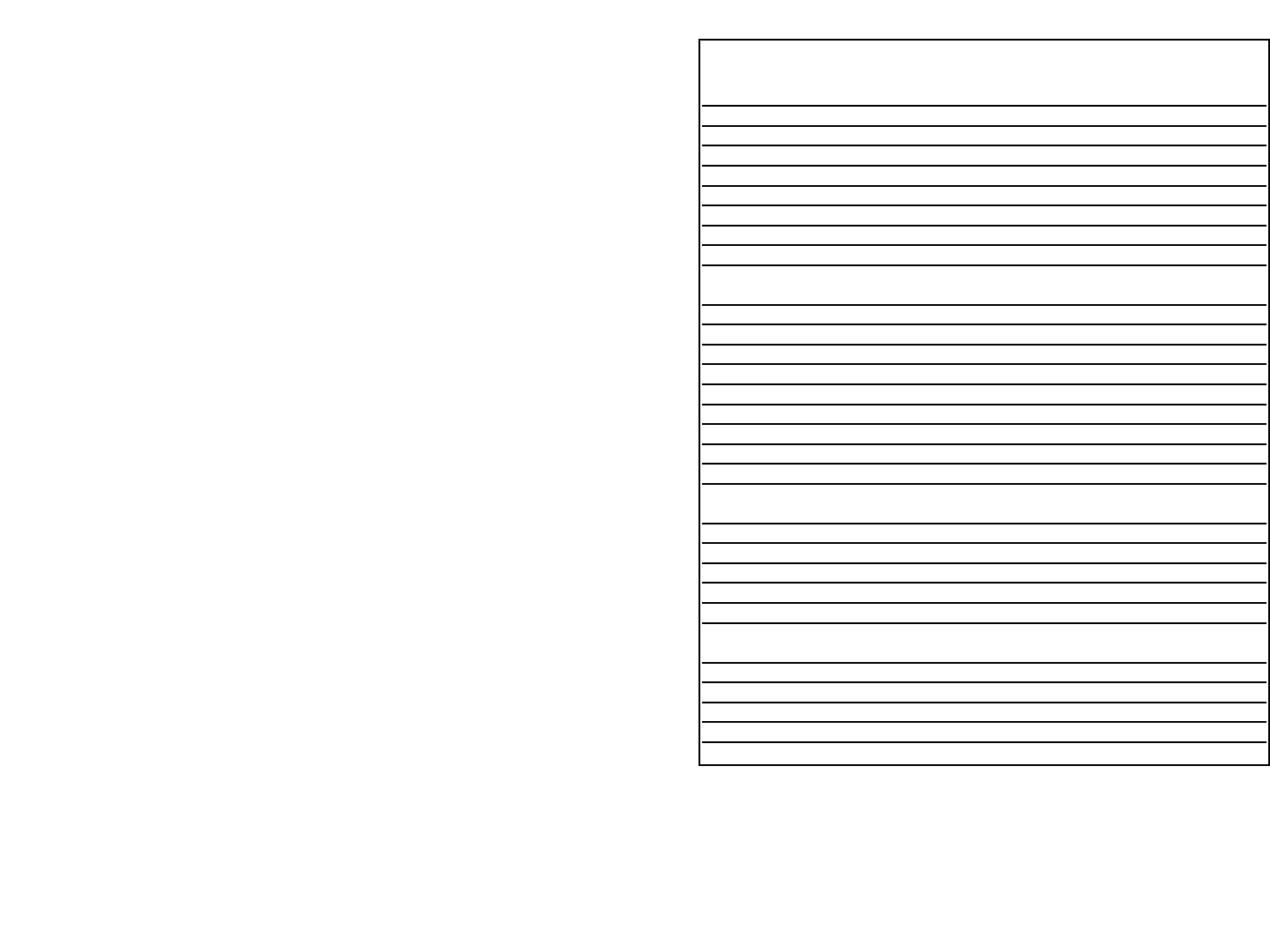
17
CCoonnvveennttiioonnaall BBaakkiinngg CChhaarrtt
RReeccoommmmeennddeedd CCoonnvveennttiioonnaall CCoonnvveennttiioonnaall
PPaann TTeemmppeerraattuurree TTiimmee
((
oo
FF)) ((
oo
CC)) ((mmiinn..))
BBRREEAADDSS
Yeast Loaf Loaf Pan 375 191 30-35
Yeast Rolls Cookie Sheet 400 204 12-15
Biscuits Cookie Sheet 400 204 8-10
Nut Breads Loaf Pan 375 191 30-35
Cornbread 8”x8” (20x20 cm) 400 204 25-30
Corn Muffins Muffin Tin 375 191 15-20
Fruit Muffins Muffin Tin 475 191 15-20
CCAAKKEESS//CCOOOOKKIIEESS
Angelfood Tube Pan 375 191 35-45
Bundt Tube Pan 350 177 45-50
Cupcakes Muffin tin 350 177 16-20
Layer, Sheet 13”x9” (23x33 cm) 350 177 40-50
Layer, Two 9” (23 cm) round 350 177 30-35
Pound Loaf Pan 350 177 60-65
Brownies 13”x9” (23x33 cm) 350 177 25-30
Choc. Chip Cookie Sheet 375 191 12-15
Sugar Cookies Cookie Sheet 350 177 10-12
PPIIEESS//PPAASSTTRRYY
Pie Crust 9” (23 cm) round 425 218 10-12
Two Crust, Fruit 9” (23 cm) round 375 191 55-60
Pumpkin Pie 9” (23 cm) round 375 191 40-45
Custard 6 - 4 oz cups 350 177 35-40
Cream Puffs Cookie Sheet 400 204 30-35
MMIISSCCEELLLLAANNEEOOUUSS
Baked Potatoes (4) 8 oz (227 gm) 375 191 60-75
Lasagna 9”x5” (23x13 cm) 375 191 55-60
Cheese Souffle 1 qt. (.95 L) 350 177 45-50
Stuffed Peppers 13”x9” (23x33 cm) 375 191 60-70
Quiche 9” (23 cm) round 400 204 25-30
16
BBaakkiinngg TTiippss
•As a general rule, to convert conventional recipes to convection
recipes, reduce the temperature by 25
0
F and the cooking time by
approximately 10 to 15%.
•Some recipes, especially those that are homemade, may require
adjustment and testing when converting from standard to convection
modes. If unsure how to convert a recipe, begin by preparing the
recipe in conventional bake. After achieving acceptable results, follow
the convection guidelines listed for the similar food type. If the food
is not prepared to your satisfaction during the first convection trial,
adjust only one recipe variable at a time (cooking time, rack position,
or temperature) and repeat the convection test. Continue adjusting
one recipe variable at a time until satisfactory results are achieved.
•Make sure the oven racks are in the desired positions before you turn
the oven on.
•For best results, always preheat the oven.
•Do not open the oven door frequently during baking. If you must
open the door, the best time is during the last quarter of the baking
time.
•Bake to shortest time suggested and check for doneness before
adding more time. For baked goods, a stainless steel knife placed in
the center of the product should come clean when done.
•Use good quality baking pans and sizes recommended in the recipe;
warped, dented, or burned pans should not be used.
•Shiny metal pans are preferred for baking items such as cakes,
cookies, and muffins because they produce light, golden crusts due to
heat being reflected by the metal.
•Glass pans may also be used for cake baking. Reduce the oven
temperature by 25 degrees when using a glass pan, but bake for the
same amount of time called for in the recipe.
•Pies are best baked in pans which absorb and hold heat. Glass,
enamel, dull-finished metal, and porcelain enamel finish give pies a
golden brown crust.



